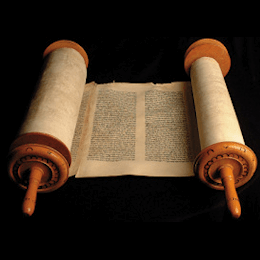Textus Receptus Bibles
Masoretic Text 1524
Old Testament
| 25:1 | יהוה אלהי אתה ארוממך אודה שׁמך כי עשׂית פלא עצות מרחוק אמונה אמן׃ |
| 25:2 | כי שׂמת מעיר לגל קריה בצורה למפלה ארמון זרים מעיר לעולם לא יבנה׃ |
| 25:3 | על כן יכבדוך עם עז קרית גוים עריצים ייראוך׃ |
| 25:4 | כי היית מעוז לדל מעוז לאביון בצר לו מחסה מזרם צל מחרב כי רוח עריצים כזרם קיר׃ |
| 25:5 | כחרב בציון שׁאון זרים תכניע חרב בצל עב זמיר עריצים יענה׃ |
| 25:6 | ועשׂה יהוה צבאות לכל העמים בהר הזה משׁתה שׁמנים משׁתה שׁמרים שׁמנים ממחים שׁמרים מזקקים׃ |
| 25:7 | ובלע בהר הזה פני הלוט הלוט על כל העמים והמסכה הנסוכה על כל הגוים׃ |
| 25:8 | בלע המות לנצח ומחה אדני יהוה דמעה מעל כל פנים וחרפת עמו יסיר מעל כל הארץ כי יהוה דבר׃ |
| 25:9 | ואמר ביום ההוא הנה אלהינו זה קוינו לו ויושׁיענו זה יהוה קוינו לו נגילה ונשׂמחה בישׁועתו׃ |
| 25:10 | כי תנוח יד יהוה בהר הזה ונדושׁ מואב תחתיו כהדושׁ מתבן במי מדמנה׃ |
| 25:11 | ופרשׂ ידיו בקרבו כאשׁר יפרשׂ השׂחה לשׂחות והשׁפיל גאותו עם ארבות ידיו׃ |
| 25:12 | ומבצר משׂגב חומתיך השׁח השׁפיל הגיע לארץ עד עפר׃ |

Masoretic Text 1524
The Hebrew text of the Old Testament is called the Masoretic Text because in its present form it is based upon the Masora—the Hebrew, textual tradition of the Jewish scholars known as the Masoretes (or Masorites). The Masoretes were rabbis who made it their special work to correct the faults that had crept into the text of the Old Testament during the Babylonian captivity, and to prevent, for the future, its being corrupted by any alteration. They first separated the apocryphal from the canonical books, and divided the latter into twenty-two books, being the number of letters in the Hebrew alphabet. Then they divided each book into sections and verses.
There is a great difference of opinion as to when the Masoretic Text was written, but it was probably accomplished in the 10th -11th century. Several editions existed, varying considerably, but the received and authoritative text is that of Jacob ben-chayim ibn Adonijah, who carefully sifted and arranged the previous works on the subject. It was published in 1524.